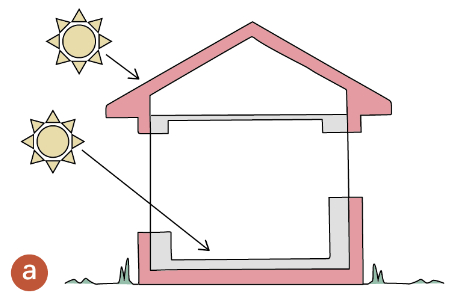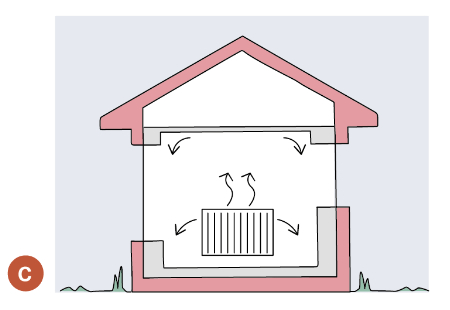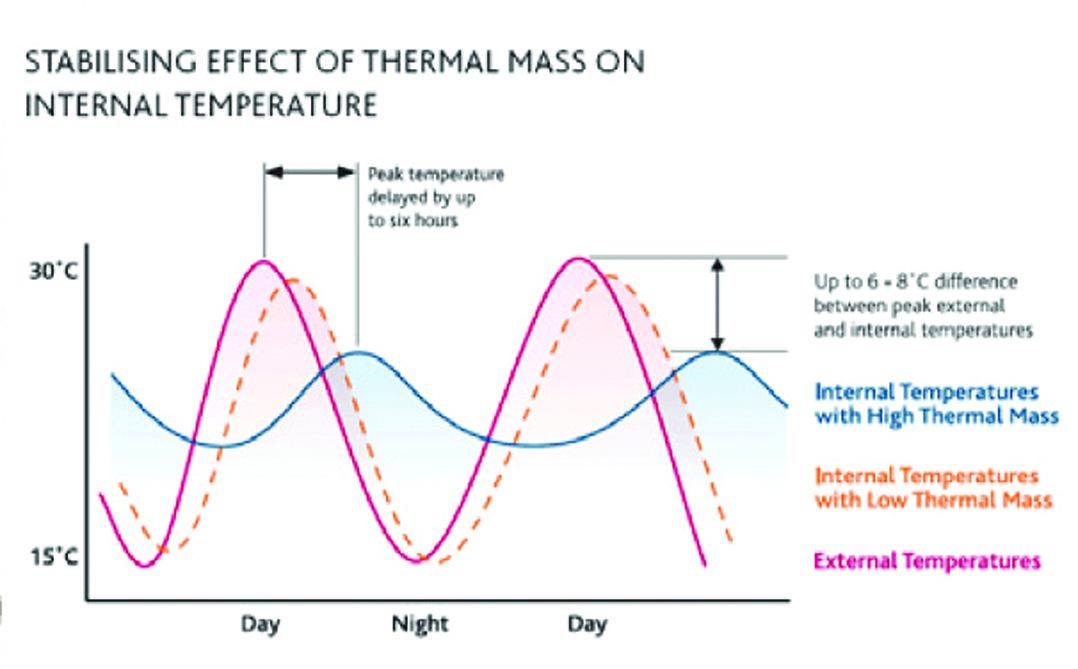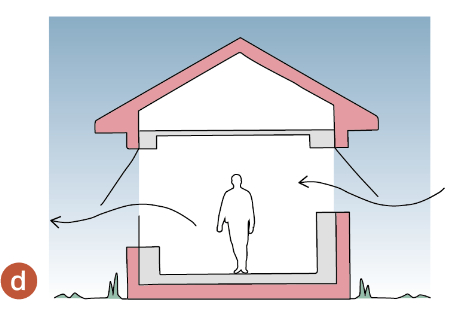Building materials that are heavyweight, such as brick, block, or concrete, can be used to absorb and release heat in buildings and help moderate the temperature.
During the day it's important on south facing facades to try and keep the highest summer sun out by using roof overhangs and solar shading.
Heavyweight walls, floors, and ceilings can absorb the suns heat and help keep the building cool using thermal mass.
Diagram showing roof overhangs and solar shading
At night time opening windows lets heat out and allows cooler air from outside to cool the thermally massive elements and reduce overall temperature: ‘night time cooling’. In the morning, the building is ready to start the cycle again. In addition to helping cool buildings in summer (an important consideration with scientific predictions of hotter summers) thermal mass can help keep heat in winter if the insulation is on the outside.
Diagram showing night time cooling.
Outside insulators keep the heat in as heat from inside the building warms up the thermally massive materials – like a giant tea cosy over the building. Take care to ensure that the insulation is continuous and there are no gaps causing ‘cold bridging’.
Diagram showing outside insulators keeping heat inside a building
The stabilising effect of thermal mass on internal temperature means that it helps to iron out the peaks and troughs in temperature, making indoor temperatures more comfortable for the occupants.
Graph showing the stabilising effect of thermal mass on temperature
Ensure there is adequate ventilation. In summer, a breeze makes people feel more comfortable even at relatively high temperatures.
Diagram showing ventilation flow through a room.
Embodied energy and thermal mass: The embodied energy of materials and the use of the building is also an important consideration in any build project for example sustainably sourced timber has low thermal mass but less embodied energy.
Modern construction materials such as straw bale have both excellent thermal properties and a low environmental impact.





